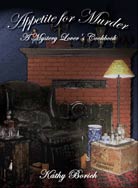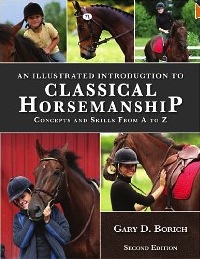The Chronicles of Narnia: The Lion, the Witch and the Wardrobe: Turkish Delight
Year Released: 2005
Directed by: Andrew Adamson
Starring: Georgie Henley. Skandar Keynes, William Moseley, Anna Popplewell, Tilda Swinton, James McAvoy
(PG, 135 min.)

"Whither is fled the visionary gleam? Where is it now, the glory and the dream?" William Wordsworth
For Alice it was the rabbit hole, and Dorothy, the tornado. Now it’s time to follow young Lucy Pevensie through another portal, from the dark recesses of an ancient wardrobe into a pristine winter wonderland filled with talking beasts and the mythological creatures of antiquity. But beyond the peaceful panoply of snow is the crystal palace of the dreaded white witch, whose matter-of-fact malevolence knows no bounds.
The film version of the first of C.S. Lewis’ seven-part fantasy begins realistically enough with the nightly bombing of World War II London and the Pevensie family’s frenzied run to the backyard shelter. Young Edmund (Skandar Keynes) puts them all at even greater risk when he impetuously returns to the house for “Father,” which turns out to be the framed photograph of their at war dad. While the London bombings and the evacuation of children to the safer countryside were still fresh enough in the minds of Lewis' 1950’s readers, some fifty years later we have to be reminded of this history.
But the newly added bombing scene also plays an important role in recreating the context of Lewis’ world, which was all too familiar with the presence of unadulterated evil and its indiscriminate rain on young and old, soldier and civilian alike. Today’s audiences may need this reminder and the equal jolt of its opposite, goodness and wisdom, as both go against our post modern pessimism, and the nuanced grays of relativism, a common denominator philosophy that portends each side equally culpable and valiant.
However, none of these cerebral notions are playing about in the heads of the Pevensie children, who are now safely ensconced in the utterly safe yet preeminently boring country estate of a kindly old professor, their only vexations the dogmatic rule of his autocratic housekeeper. On one particularly rainy day, they play hide and seek to while away the time, and the youngest, Lucy (Georgie Henley), finds the perfect retreat, a massive wooden wardrobe concealed under a layer of sheets. She wanders through an assortment of fur coats that gradually gives way to a snowy wood where she meets Mr. Tumnus (James McAvoy), a faun - part man, part goat. He promptly invites her to tea in his cozy hillside abode – this may be a fantasy, but it is an English one.
When Lucy returns through the same wardrobe, the tales of her adventure fall on deaf ears, because, in spite of poking at its innards, the only creatures to emerge from the wooden wardrobe are the very lifeless fur pelts hanging there. That evening Lucy goes through the wardrobe again, this time followed by Edmund, the next youngest and probably thus most open to this world of imagination. Suddenly a sleigh pulled by reindeer confronts him, but it is not Father Christmas behind the reins, but a very icy queen, (Tilda Swinton) who rewards Edmund’s slavish obeisance to “Her Majesty” with hot chocolate from a jeweled chalice that materializes at her command. She further enchants young Edmund with his wished for “Turkish delight” a chewy confection that also arises magically. Before she leaves, the white witch shows Edmund her crystal Palace and tells him to bring his siblings with him for a visit there.
Eventually all four siblings make it through the wardrobe where they begin to learn the lay of this new land. Locked in 100 years of winter with no Christmas to soften its cold blasts, the assorted talking beasts of Narnia await the promised return of their King Aslan, who will deliver them from the icy rule of the wicked white witch. Somehow during this enlightenment from a particularly appealing beaver, Edmund wanders off, presumably more impressed with the queen’s Turkish delights than tales of her sinister nature. His betrayal of his siblings and his rescue and redemption propels much of the story.
Much has been written about the Kingly Lion, Aslan, and his role as a Christ figure in this allegorical tale. Phillip Pullman, a British fantasy writer, sneers at Narnia as “a peevish blend of racist, misogynistic and reactionary prejudice.” Apparently it doesn’t take much more than a whiff of Christianity to bring out some deep-seated nastiness. I find these objections “Much Ado about Nothing” in the same vein as those overly concerned with the “satanic” nature of the Harry Potter series.
What accounts for the tremendous popularity of both Narnia and Hogswart, it seems to me, are not any incipient religious overtones, most of which are lost on the young viewers, but the worlds of imagination they open. And anyone familiar with mythology and literature will attest that the war between good and evil, as well as the cycle of self-sacrifice, redemption, and rebirth are not limited to Christianity, but envelop humanity as a whole.
So put aside your adult misgivings, forget about those too cerebral concerns, such as what do you eat in Narnia, where all the beasts would object most vociferously to being had for dinner, and simply enjoy this tale of a world not so very different from ours after all.
—Kathy Borich
Film-Loving Foodie
Given the afore-mentioned quibble about finding a ready source of meat for the table, the Narnia Chronicles content themselves with dry toast and the chewy confection called Turkish delight. After brother Edmund’s first taste from the wily witch, he cannot get enough of the stuff. “He thought only of trying to shovel down as much Turkish delight as he could, and the more he ate, the more he wanted.”
Its sweetness, if not its addictive nature, is noted in this 300-year-old invention to soothe a sultan’s troubled harem:
Faced with the sticky problem of how to keep happy the four wives and hundreds of mistresses maintained behind the elegant façade of the Topkapi Palace, Sultan Abdul Hamid hit on a sweet solution. The Sultan summoned to his court the greatest confectioners in the empire and offered them to find a dessert that would quell the rumblings of discontent within his harem. And so, it is claimed, the sweet we know today as Turkish delight was born.
Jonathan Brown
Enjoy this ancient and wonderful confection, but beware of any white-garbed maiden who follows it up with an invitation to her abode.
Turkish Delight
- 5 Tablespoons corn starch
- 1/2 cup cold water
- 1/2 cup hot water
- 2 cups sugar
- 1/2 cup orange juice
- 1 teaspoon rosewater (or lemon juice)
- 2 cups pistachios (or other nuts, if you like)
- A bag of powdered sugar
Mix corn starch with cold water. Set aside.
Bring hot water, sugar, and OJ to a boil.
Add cornstarch.
Simmer for 15 minutes.
STIR OFTEN.
Remove from heat, add lemon juice and flavoring (whatever you
choose).
Stir in nuts.
Pour into buttered pan.
When cooled and thickened (be patient!) cut into 1 inch cubes with knife dipped in hot water.
Roll in powdered sugar.
Recipe Source: Into the Wardrobe :: a C.S. Lewis web site



 Featured
Featured